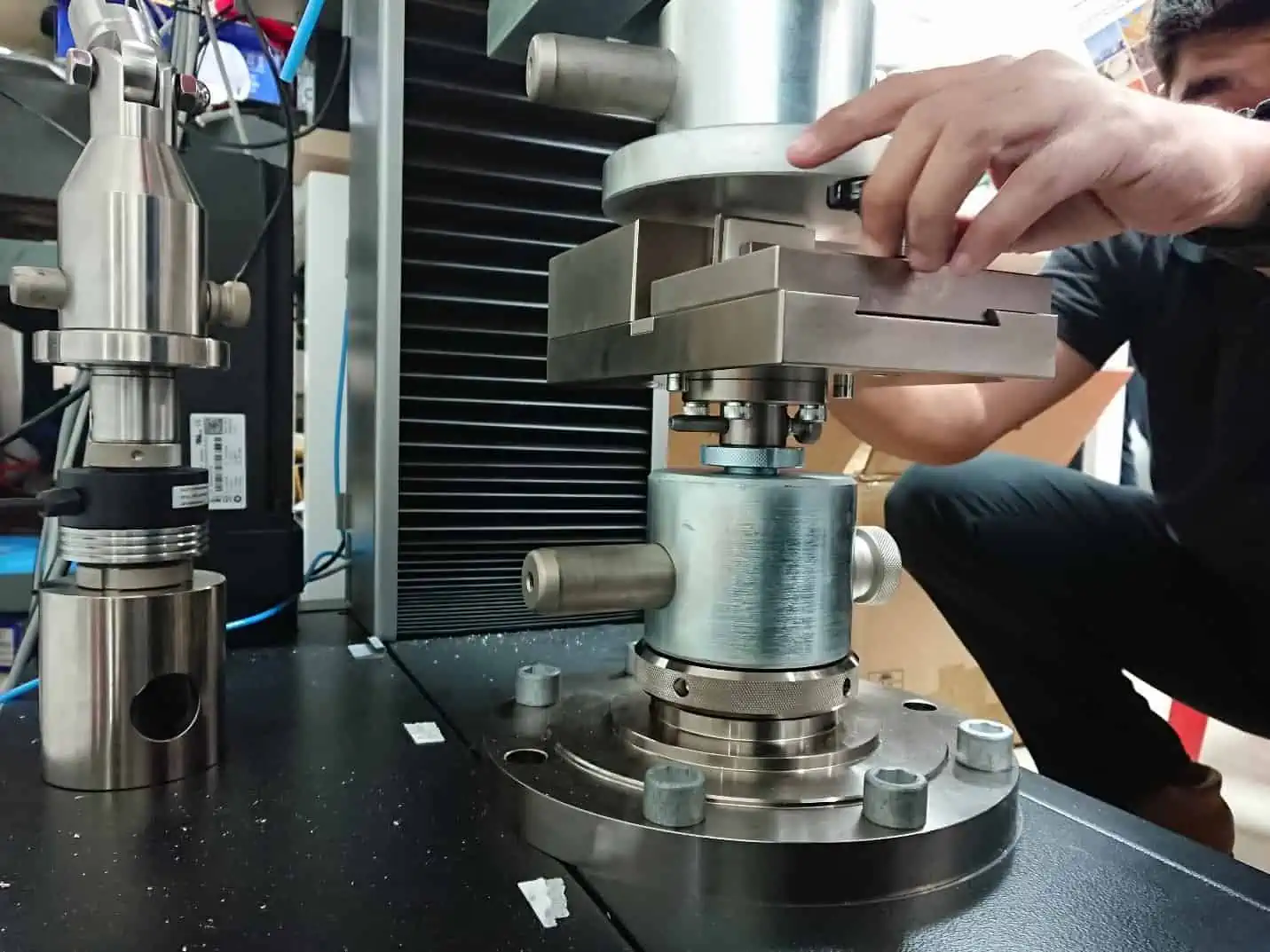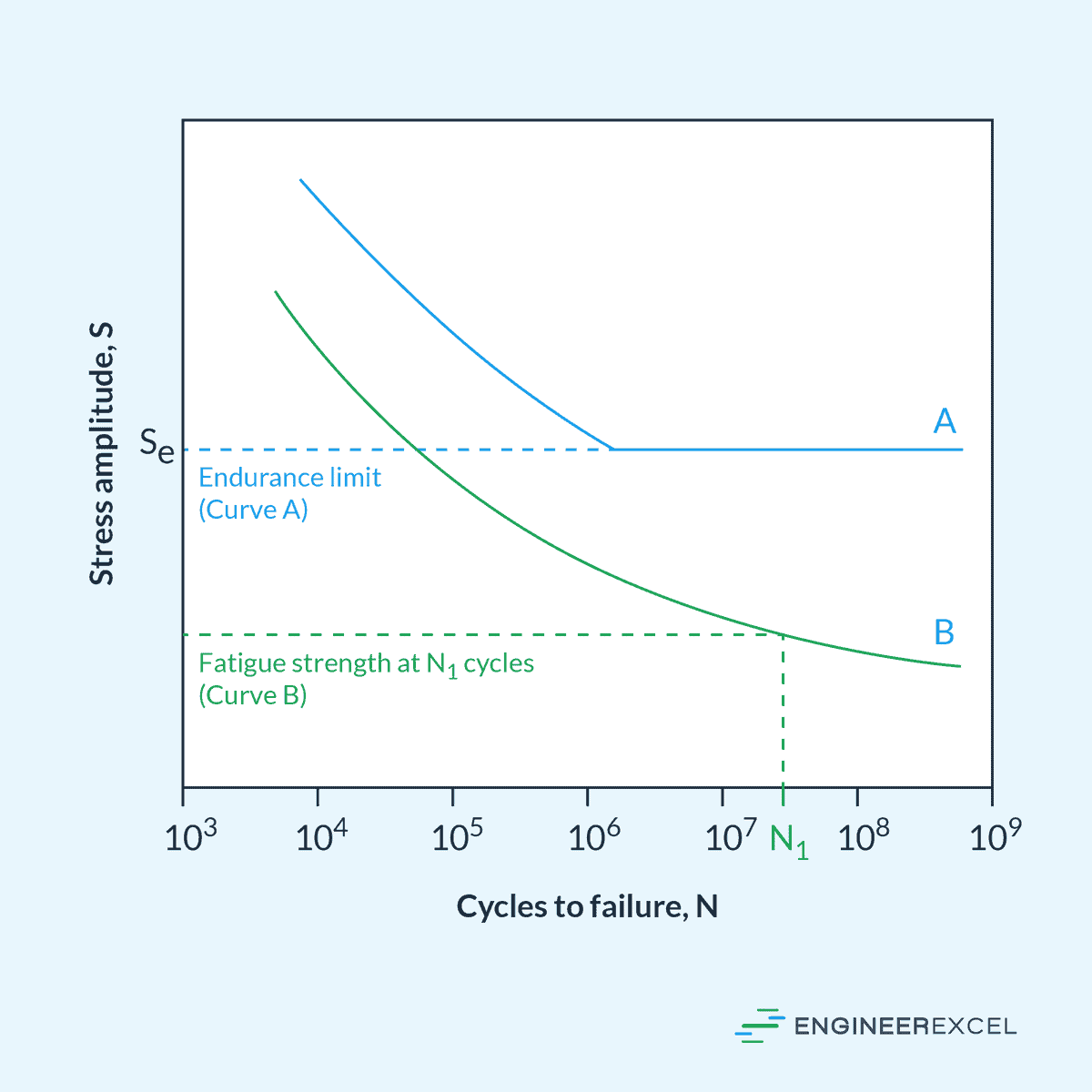The endurance limit is the maximum stress amplitude that a material can endure for an infinite number of cycles without failing. Below this limit, the material will not experience fatigue failure even under repeated cyclic loading.

In this article, we will explore the concept of endurance limit, how to determine its value, and the different factors that influence it.
Endurance Limit Explained
Fatigue is a phenomenon where a material experiences failure under repeated cycles of stress or strain, even when these stresses are below the material’s yield stress. This type of failure is attributed to microscopic imperfections, often found on the surface of the material, which cause localized stress to be much higher than the average stress across the material’s cross-section.
Over time, as the material undergoes stress cycling, small cracks begin to form. These cracks lead to an increased stress concentration at their tips, promoting further crack growth with each stress cycle. As the cracks extend, they reduce the cross-sectional area of the material until it can no longer sustain the applied load, resulting in sudden fracture.

Elevate Your Engineering With Excel
Advance in Excel with engineering-focused training that equips you with the skills to streamline projects and accelerate your career.
To prevent such failures and ensure safe operation under repeated loading, it is important to determine the endurance limit of a material. The endurance limit, or fatigue limit, is defined as the maximum stress amplitude that a material can withstand for an infinite number of load cycles without giving in to fatigue failure.
This limit is a key design criterion in materials science, especially for components that are subject to cyclical stresses. Engineers use the endurance limit to establish safe operating boundaries and to estimate the service life of components such as bridges, aircraft, and machine parts, which are prone to fatigue due to repetitive stress.
It is essential to differentiate between the endurance limit and fatigue strength, as illustrated in the diagram below.

The endurance limit represents a stress level below which the material will never fail, regardless of the number of cycles. On the other hand, fatigue strength is the maximum stress that a material can endure for a specified number of cycles before failure. For example, a material might have a fatigue strength of 500 MPa for up to 2 million cycles, but its endurance limit might be set at 250 MPa.
Determining Endurance Limit
To determine the endurance limit, engineers utilize several empirical and analytical methods.
Rotary Beam Testing (RBT)
Rotary beam testing, also known as rotating bending testing, is a method used to assess the fatigue behavior of materials by subjecting a sample, usually a round bar, to bending stresses. During the test, the specimen is fixed at both ends and rotated at a constant speed while a constant bending moment is applied, typically at the sample’s midpoint. This process induces cyclic stresses on the material, simulating repetitive loading conditions.
As the test progresses, the number of cycles endured before failure is recorded. To determine the endurance limit, multiple specimens are tested at varying stress levels. The results yield an S-N curve, showing stress (S) against the number of cycles to failure (N), similar to the diagram above, where the endurance limit can be inferenced.
Axial Load Testing
Similar to rotary beam testing, axial load testing applies cyclic stresses on the material, but instead of bending moment, axial forces are applied to the specimen. In this test, a sample is subjected to cyclic tensile and compressive loads that varies from a maximum positive value to a maximum negative value along its longitudinal axis.
Statistical Analysis
Using historical fatigue data, statistical analysis can be used to determine endurance limit. This is done by applying regression techniques to fit a curve to the data points in an S-N curve.
The endurance limit is typically the asymptotic value for stress with respect to the number of cycles on the S-N curve. For example, the endurance limit for steel is 27 ksi or 186 MPa as shown in the S-N diagram below.

However, it is important to note that some materials do not have an asymptotic S-N curve, meaning they lack a well-defined endurance limit. In such cases, the endurance limit is often characterized as the stress level below which a specified large number of cycles, typically between 10^6 and 10^7, can be withstood without failure. For instance, for aluminum, the endurance limit is usually specified as the stress having a limit of 500 million cycles, which is approximately 19 ksi or 131 MPa, as depicted in the diagram above.
Factors Affecting Endurance Limit
The endurance limit of a material is significantly influenced by various inherent and external factors, including material properties, manufacturing processes, surface finish, environmental conditions, and loading type.
Material Properties
The composition and microstructure of a material inherently determine its endurance limit. High strength steels, for example, typically exhibit higher endurance limits than softer metals like aluminum. The presence of alloys and heat treatments can also alter the endurance capabilities, enhancing resistance to fatigue over repetitive loading.
Manufacturing Processes and Surface Finish
Manufacturing processes such as forging, casting, and machining can introduce surface irregularities, residual stresses, and microstructural changes that impact fatigue life. For example, a smoother surface finish, often achieved through fine machining or polishing, tends to improve the endurance limit by reducing stress concentrations where cracks might initiate. Conversely, rough surfaces from processes like casting or coarse machining can decrease the endurance limit due to micro-cracks and other surface defects.
Additionally, heat treatments and surface hardening processes can improve endurance limits by inducing compressive surface stresses and enhancing material properties.
Environmental Conditions
Environmental conditions can also have a significant impact on the endurance limit of materials. For example, exposure to corrosive environments, such as those containing saltwater or industrial chemicals, can lead to corrosion fatigue, where the material deteriorates at a faster rate due to the combined effects of cyclic loading and chemical attack.
Furthermore, elevated temperatures can reduce the endurance limit by accelerating material creep and reducing the overall strength of the material. Conversely, in some materials, lower temperatures can increase the endurance limit by making the material more brittle and less ductile, which can be advantageous up to a point before becoming detrimental due to increased brittleness.
Humidity can also affect the endurance limit, especially in materials like polymers and composites, where moisture absorption can lead to swelling and degradation of material properties.
Loading Types
The type of loading applied to a material also influences its endurance limit. In general, axial loading results in a higher endurance limit compared to other loading types because the stress distribution is more uniform. In contrast, bending and torsional loadings introduce non-uniform stress distributions, which can lead to lower endurance limits due to the concentration of stress at specific points.
Rotating bending fatigue, a common loading condition in shafts and axles, is particularly severe because each fiber of the material experiences the full range of stress from tension to compression. Additionally, the presence of stress concentrations, such as notches or keyways, under bending or torsional loads can further reduce the endurance limit due to the increased localized stresses.
